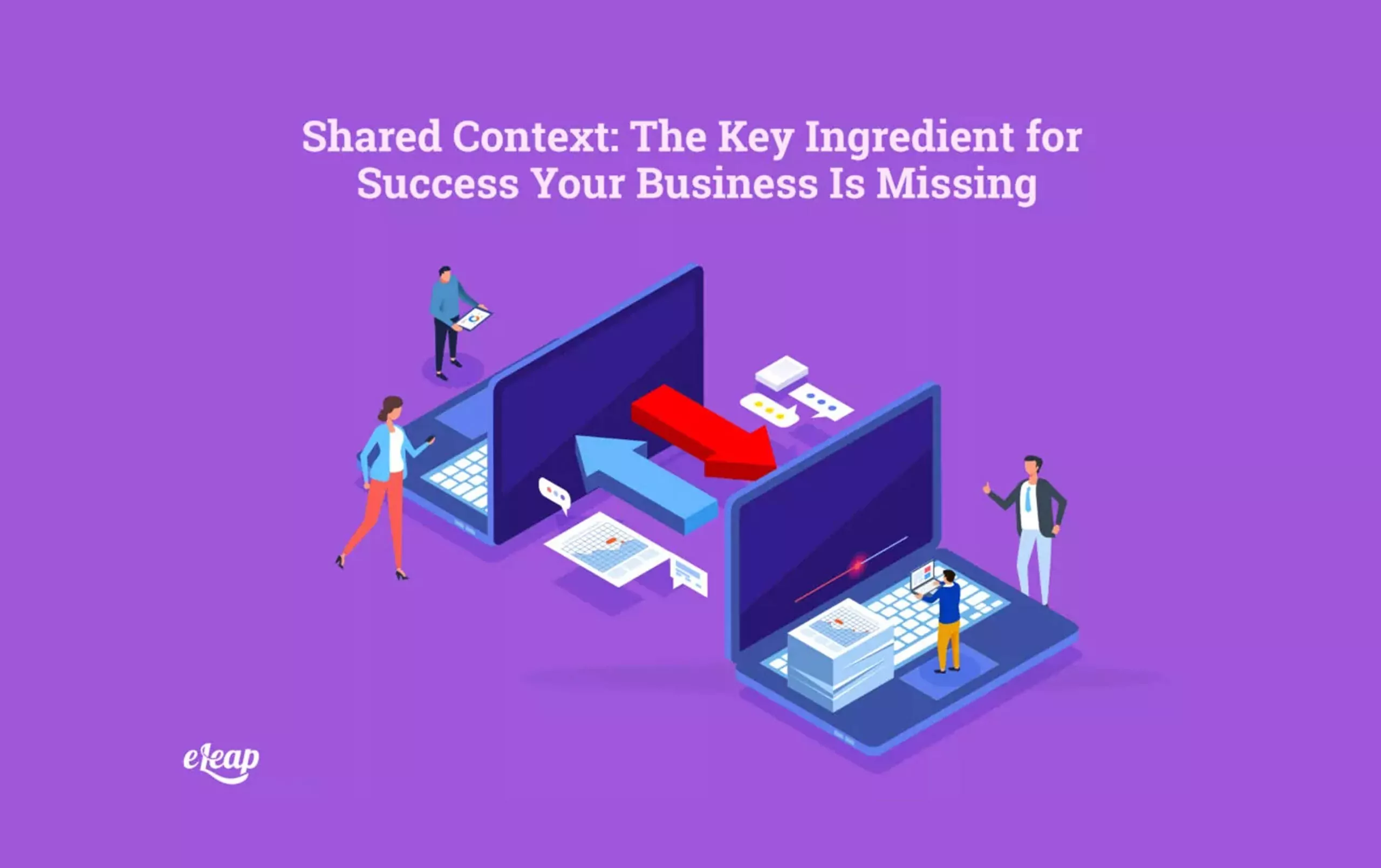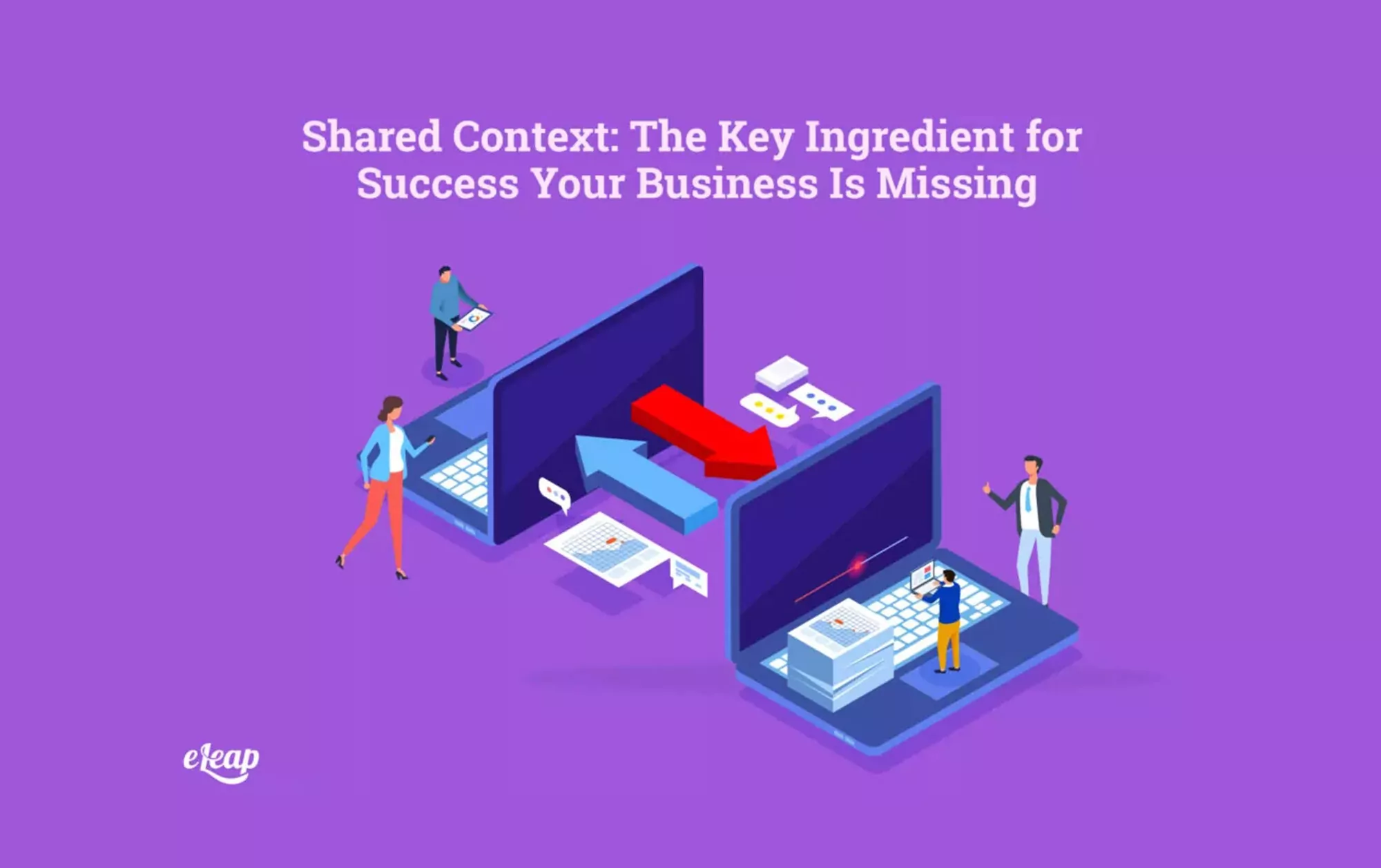Shared Context: The Key Ingredient for Success Your Business Is Missing

What’s the point of your business? Why does it exist? Many of you will probably answer “to make money”. That’s not enough. Not enough by a long shot. Look around for successful business examples.
For an organization to thrive, profit cannot be the only primary reason it exists.
To achieve success, your business must exist to do something good for someone other than the business owner or shareholders. It must provide value, solve a problem, or address pain points. This is the context of the business.

Isn’t That Just Our Mission Statement?
For many managers and decision-makers, the information above probably makes it sound like we’re discussing your mission statement. That’s correct, up to a point. Your mission statement certainly informs your context. However, there’s so much more to it than that!
It’s not just your ultimate goal. It’s how you get there. It’s what you do on a day-to-day basis to make a difference for people in the world. It’s the stance you take regarding causes and charitable organizations, and how you tie your values into the company culture.
Your context is a verbal (or implied) picture of what today, tomorrow, and the future should and will look like. That image is based on values and your mission, yes. However, it’s also created through your culture, KPIs, mission-critical objectives, shifting audience expectations, and so much more.
What’s a Shared Context?
So, if the purpose of your business is the context, what does shared context mean and why is it so important? Simply put, a shared context is the general that makes the specific meaningful. That’s a little dense, so let’s break things down.
General: By this, we mean everything in the background of an employee’s average day on the job. It’s the environment they step into when they walk through the front door (or open Slack in these days of working remotely). It’s the product or service your company offers. It’s the good that you do for your customers or clients. In short, it’s everything about your business and why it exists.
Specific: By specific, we mean the individual tasks that each employee is required to carry out each day. It’s creating that new marketing slick or that new social media post. It’s working on content marketing or innovating to make your product even better. It’s built from the specific things that employees do to advance the business.
Creating a Shared Context
So, how do you create a shared context? How do you get your employees on board with your vision, to accept your values, and to understand the importance of the goals and objectives for the business? You can do this in many different ways, and we’ll talk about them in greater depth below.
Encourage the Right Context
First, you need to think about the context of the business in terms of culture. What tone are you setting for your managers and teams? What are you telling them is acceptable and what isn’t?
For instance, are you encouraging your employees to become their best selves? If not, how will they move the business forward? If so, how are you doing that?
You must bring intentionality to the table here. You cannot be tacit – you must be direct. You must permit your employees to do whatever is necessary for them to become whole, fully-functional human beings. Only then can they be their best selves in the workplace.
What does that mean? It could mean something as simple as giving them permission to learn and develop through tools and materials that the company provides. L&D initiatives can have powerful impacts on morale, attrition, churn, and other factors.
It could also mean permitting them to heal themselves. For example, childhood trauma can manifest in many different forms in our adult lives. Sure, it can involve things like drug and alcohol abuse, but it can also display in compulsive shopping, in an inability to treat others well, and other negative behaviors that affect workplace performance, individual success, and organizational growth.
Encouragement here could mean permitting employees to seek out counseling and therapy. Providing Jan from accounting with an extra day off each week so she can see her counselor, or giving David an extra-long weekend so he can begin to make amends with people in his life are both examples.
Build Group Habits
What is a business if not a group working toward a common goal? Groups only survive through cooperation, and habits help make cooperation simpler and easier. What habits, though? In truth, it could be almost anything, but some of the most pertinent examples include the following:
- Open, Ongoing Communication: Your teams must be able to communicate effectively, and that’s only possible when open, ongoing discourse is actively encouraged by those at the very top.
- Mutual Respect: Everyone in your business deserves the respect of their peers. Create a culture that values mutual respect and highlights the benefits.
- Ongoing Learning: No one ever knows all there is to know about a topic. Intentionally build a culture that not only values ongoing learning but makes it a priority in the workplace.
- Reflections and Gratitude Sessions: If you want to create a positive shared context, consider having weekly reflection sessions and gratitude sessions. These help everyone come together, reflect on successes (and failures), and define what they’re grateful for.
What’s Your Shared Context?
Without a shared context, you simply have cogs in a machine working for no real purpose. If money is your only goal, then your business is doing no real good for anyone outside the executive level and will eventually fail. Having a context is absolutely crucial, but it’s equally important that you share that context with your teams.
What is your shared context? How are you communicating the context to your teams? What intentional steps are you taking to create a happier, healthier, more positive environment? How are you designing a better culture that supports employees in their quest to become their best selves?